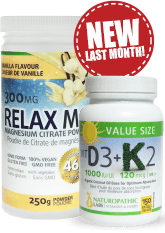Heliobacter Pylori
Updated Aug. 15th, 2019
Helicobacter pylori (H. pylori) is a bacterium that is estimated to already infect over 50% of the world’s population. Most commonly (in over 80% of cases) there are no symptoms of infection. This bacterium is stable in the strongly acid environment of the stomach because H. pylori is able to raise the pH in a mini-environment around itself.
At the same time, H. pylori reduces plasma levels of certain hormones that affect appetite and trigger the release of inflammatory molecules into the circulation. These effects combine to cause the digestive symptoms commonly associated with H. pylori, and can trigger other inflammatory processes in the body like arteriosclerosis.
Sources of Infection
The means of transmission of H. pylori is not yet known. Scientists suspect that it is transmitted through contaminated food or water, but there is no conclusive research in this area. Some infected people have H. pylori in their saliva, so the bacteria may also be spread by mouth-to-mouth contact or sharing of utensils.
Signs and Symptoms of Infection
Although the vast majority of those infected with H. pylori are asymptomatic silent carriers, there are a few symptoms commonly associated with infection. Some possible signs and symptoms are:
- Abdominal pain or discomfort
- Nausea
- Frequent burping
- Vomiting
- Fatigue
- Decreased appetite
- Bloating
- Weight loss
The role of stomach acid
Stomach acid in the body is responsible for activating digestive enzymes in the stomach for proper digestion. It also protects the digestive tract against invading pathogens like bacteria and parasites. During infection with H. pylori, the levels of bacteria grow larger until the basic environment that they create can actually negate the stomach acid present and prevent proper digestion and defense.
Illnesses Associated with H. pylori Infection
Infection with H. pylori has been associated with an increased risk of a number of different diseases, the most severe of which is gastric cancer. This is likely due to the association of infection with initiating conditions such as: gastritis, and peptic ulcers. Both of these conditions increase cell turnover, and it is this increased replication of cells that causes a higher risk of DNA errors, and thus cancer. In fact, the World Health Organization has classified H. pylori as a group A carcinogen (cancer-causing agent). Interestingly, recent research has also found a correlation between infection with certain H. pylori strains and an increased risk of a serious thyroid condition known as Grave’s disease. Other inflammatory conditions have also been associated with the immune response triggered by H. pylori infection. The most common of these is arteriosclerosis.
Nutritional Deficiencies
There is an association between H. pylori infection and iron deficiency anemia, as well as reduced absorption of vitamin B12, vitamin A, C, E, and folic acid. These are all due to the hypochlorhydria (reduced stomach acid) or achlorhydria (absent stomach acid) caused by infection. This reduced stomach acid also allows for other bacterial infections to invade the digestive tract, which can lead to further complications such as diarrhea, and leaky gut syndrome.
Testing for H. pylori
There are various methods of testing available to find out if you are infected with H. pylori. There are tests that check your bodily fluids like tests for stool samples that look for a bacterium called Hp antigens and blood tests that look for the presence of H. pylori antibodies. The most invasive method is an endoscopy and biopsy in which a small camera is fed down the throat and a tissue sample is taken to check for inflammation and infection. An easier, less invasive test called a urea breath test is available as well. In this test, a liquid solution or capsule of radiolabelled urea is swallowed, and 15-30 minutes later the exhaled breath is tested for the presence of the radiolabel. If there are H. pylori present in the gut, they will break up the urea into carbon dioxide that is absorbed in the digestive tract, and exhaled in the breath. If this bacteria isn’t present, the urea will be absorbed in whole and will be excreted in the urine. Thus, presence of the radiolabel in the breath represents a positive H. pylori breath test.
Conventional Treatment
In general, when infection is diagnosed, the conventional first-line treatment of H. pylori is triple therapy, consisting of two antibiotics such as: amoxicillin, clarithromycin, metronidazole, tetracycline, and levofloxacin, combined with a proton pump inhibitor (PPI). In recent years, antibiotic therapy success rates are dropping and current research indicates a success rate well below 80% because of the development of increasing antibiotic resistance.
NATURAL TREATMENT
Probiotics – L. rhamnosus
Probiotics have been clinically shown to help reduce the inflammatory effects of H. pylori infection. Thus, supplementation with beneficial bacteria may help to reduce some of the side effects associated with infection. One particularly beneficial strain against H. pylori is Lactobacillus rhamnosus (L. rhamnosus). It is particularly able to withstand the acid environment of the stomach, which allows it to directly compete with H. pylori there. A good multi-strain probiotic, high in L. rhamnosus will help to reduce the symptoms of a current H. pylori infection, and can also protect against reinfection after treatment. For more information on Lactobacilli probiotics, please click here.
Sulforaphane
Cruciferous vegetables such as: broccoli, cabbage, brussel sprouts, cauliflower, and kale all contain a substance called sulforaphane (SGS). SGS has been shown to help destroy H. pylori, and to protect against the gastric irritation that can lead to ulcers and eventual stomach cancer. Besides its presence in food, SGS can also be found in supplement form. For more information on sulforaphane, please click here.
Mastic Gum
Supplementation of mastic gum for 2 weeks has been shown to significantly reduce the symptoms associated with peptic ulcers. Supplementation for longer periods has been shown to help reduce H. pylori in the digestive tract, although there is some controversy in the research community about the effectiveness of mastic gum for complete treatment of this type of infection.
Other Treatments – Stomach pH
There are a large number of proposed treatments available for H. pylori, although many of them are not supported by research. Some of these are Manuka honey, apple cider vinegar, and some other antibacterial or acid-promoting supplements. Raising the acid content in the stomach can make it harder for H. pylori to survive, but unfortunately, it can also further damage the stomach lining. This is especially risky in those already suffering from gastritis or ulceration of the stomach. Altering your stomach pH in these cases should only be done under the supervision of your healthcare provider.
Protecting the Stomach
Because H. pylori bacteria damage the stomach lining, it is important to combine antibacterial treatments with supplements that can soothe and protect the digestive lining. Herbs that perform this function are called demulcents. Some great demulcents are: slippery elm, marshmallow, and licorice.























I have been looking for information on which probiotic strains are good for H. pylori, good to know that L. Rhamnosus is one of them. My current multi-strain probiotics have L. Rhamnosus in it but only at 2 Billion cfu(total 10B), not sure if this amount is effective. I might need to look for a product higher in this strain. Thanks for the article!
Hello, Rita,
We are glad you found this article helpful in learning about the probiotic strain you are interested in for your health. If you'd like to learn more about digestive health, check out this article to learn more:
https://www.nationalnutrition.ca/articles/health-concerns/digestive-health/
Have a healthy day.